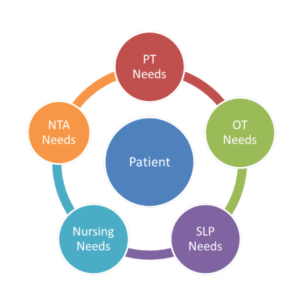Payment for care after hip, knee replacement focus of AHCA comments to CMS
A proposed hospital outcome and efficiency measure that would affect payments to skilled nursing facilities for the care of those who have undergone total hip arthroplasty and/or total knee arthroplasty can be improved in several ways, the American Health Care Association (AHCA) told the Centers for Medicare & Medicaid Services in a recent letter [PDF].
“As the proposed outcome measure includes post-acute services furnished within the episode of care window for the identified…measure cohort, our AHCA member facilities play a critical role in the successful post-acute management of the subject patient population,” Dan Ciolek, AHCA's senior director of therapy advocacy, told the agency.
The association offered the following comments on the proposed quality improvement-related measure:
- The 30-day outcomes window is not sufficient, particularly related to capturing post-acute services furnished for those with complex cases who require services beyond the 30-day index hospitalization window. “Excluding costs associated with directly related post-acute services beyond 30 days would artificially deflate predicted expenditures associated with such patients, and could result in adverse patient selection for patients with complex needs if adopted,” according to Ciolek.
- Post-acute providers should be represented on the technical expert panel developing the measure.
- Methodology for determining outpatient therapy expenditures as a component within the payment measure outcome need to be clarified or revised.
- The approach to risk adjustment should be modified to include prior use of health services, admission source and available administrative data on support systems. Such factors, Ciolek wrote, “are clinically relevant and have a strong relationship with the cost outcome,” and not addressing them in the payment measure could result in hospitals choosing not to perform the procedures in some people.
For more information on the proposed measure, see Ciolek’s blog.
I Advance Senior Care is the industry-leading source for practical, in-depth, business-building, and resident care information for owners, executives, administrators, and directors of nursing at assisted living communities, skilled nursing facilities, post-acute facilities, and continuing care retirement communities. The I Advance Senior Care editorial team and industry experts provide market analysis, strategic direction, policy commentary, clinical best-practices, business management, and technology breakthroughs.
I Advance Senior Care is part of the Institute for the Advancement of Senior Care and published by Plain-English Health Care.
Related Articles
Topics: Advocacy , Executive Leadership , Medicare/Medicaid , Regulatory Compliance









